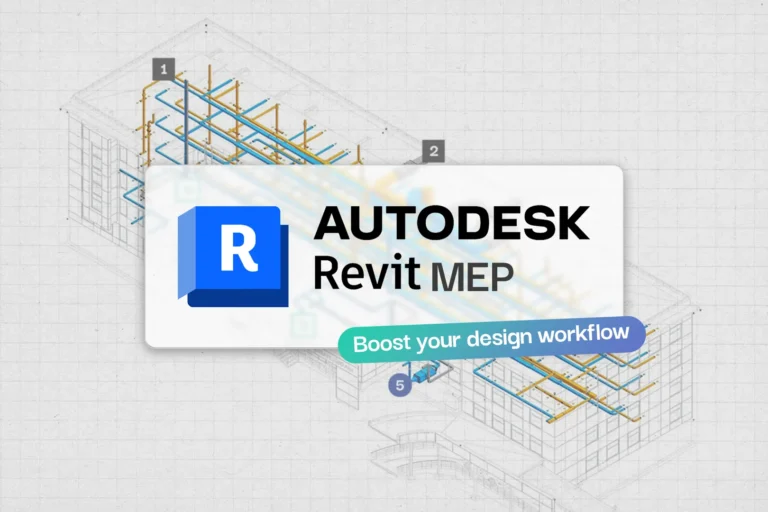The Life of a Remote Architect: A Day in the Modern World
With new remote opportunities, gone are the days when architects were confined to physical offices and construction sites.
5 min read

With the rise of technology and online collaboration tools, modern architects have adopted the flexibility of remote work. In this article, we will explore the daily responsibilities of remote architects, the benefits of working from home, and the skills required to thrive in this digital landscape. Learn everything you need to know!
Can Architects Work Remotely?
As skilled professionals in the field of architecture, architects play a vital role in designing all kinds of structures: homes, offices, and educational buildings are only a few project types we can mention. While the traditional image of an architect conjures up thoughts of drafting tables and site visits, many architects are now choosing to work remotely and they have many good reasons to do so.
Digital advancements and online collaboration tools have facilitated this shift, enabling architects to connect with clients, collaborate with their teams, and oversee projects without any additional efforts from the comfort of their homes.
Benefits of Remote Work for Architects
Working remotely offers architects a wide array of benefits. Time and cost savings are key, as remote architects can efficiently manage their schedules without the need for lengthy commutes or endless idle time.
Additionally, the flexibility of remote work lets architects balance professional and personal commitments, bringing a healthier work-life integration.
Essential Skills for Remote Architects
Being a successful home-based architect implies managing a unique skill set. Architects need to combine their creative prowess with technical capabilities, bringing high-level analytical and planning skills to the table.
Proficiency in drawing, along with a keen understanding of safety guidelines and construction codes, is crucial. Moreover, architects must navigate the digital landscape, utilizing computer software for tasks such as creating 2D and 3D models of their designs. A grasp of art history, mathematics, and physics complements their toolkit, contributing to well-rounded expertise.
Opportunities for Remote Architects
The new landscape of architecture offers professionals the freedom to pursue their careers virtually working from anywhere in the world. Remote architects can collaborate with clients spanning diverse industries and manage projects of all scales.
The ability to transcend geographical constraints empowers architects to be creative professionals while enjoying the benefits of a home-based work environment.
Careers in Architecture: Finding Your Way
Latin American architects must adhere to national university degree standards to work remotely for the United States. The field of architecture offers diverse specializations, allowing individuals to carve unique career paths.
Whether pursuing landscape design, BIM model or hospitality architecture, architects have the opportunity to tailor their careers to match their interests and skills.
Remote Working for Architectural Firms
Architectural firms, recognizing the perks of remote work, are increasingly adopting flexible models. The ability to tap into a global talent pool, reduce overhead costs, and make team collaboration a real thing through online platforms has made remote working a viable option for them.
Adopting this shift allows firms to remain competitive, agile, and responsive to the evolving needs of the industry. The modern architect’s journey involves navigating a diverse range of responsibilities, from creative design to project oversight.
Embracing the possibilities of remote work opens new doors for outstanding architects, providing flexibility, efficiency, and a healthier work-life balance. As the architectural landscape continues to evolve, the remote architect emerges as a dynamic and adaptable professional, shaping the future of the Architecture, Engineering and Construction industry.
What Does An Architect Do Based on Their Knowledge?
What Does An Architect Project Manager Do?
What Does a Construction Project Manager Do?
What Does A Vectorworks Architect Do?
What Does a Revit / AutoCAD Interior Designer Do?
What Does a Revit / AutoCAD Architect Do?
What Does a BIM Modeler Do?
What Does a BIM Manager Do?
What Does an Architectural Visualizer Do?
What Does a BIM Architect Do?
What Does a Landscape Designer Do?
What Does a Lightning Designer Do?
What Does a Renderer Do?
What Does An Energy Efficiency Architect Do?
What Does an ADA Expert Do?
The #RemoteRevolution arrived
The Architecture, Engineering, and Construction industries in the US are in constant growth. New trends emerge every day and, as a result, the most innovative companies are always in need of professionals just like you. Enter our Career Site today and find amazing opportunities to work as a remote architect from anywhere in the world!







